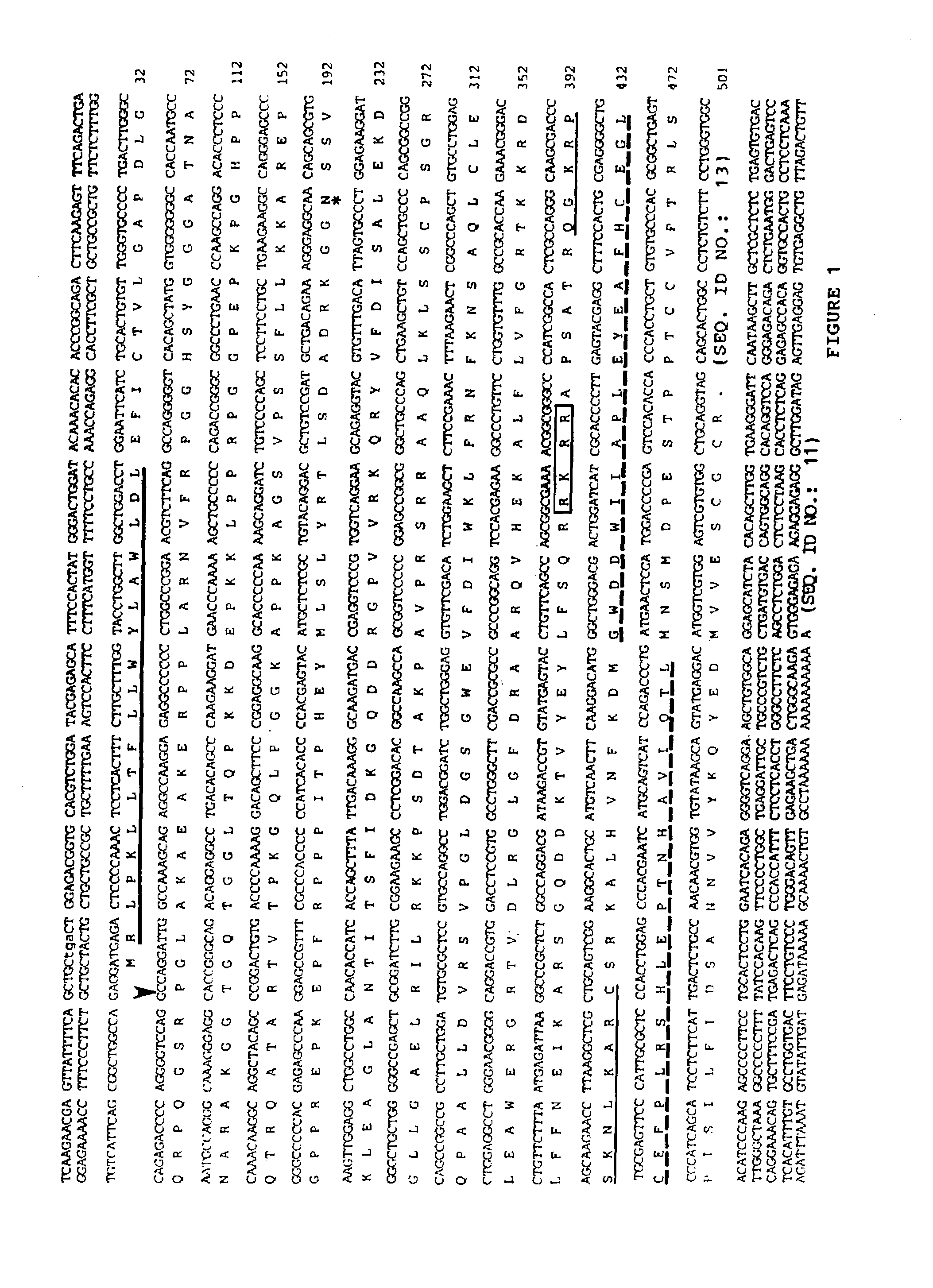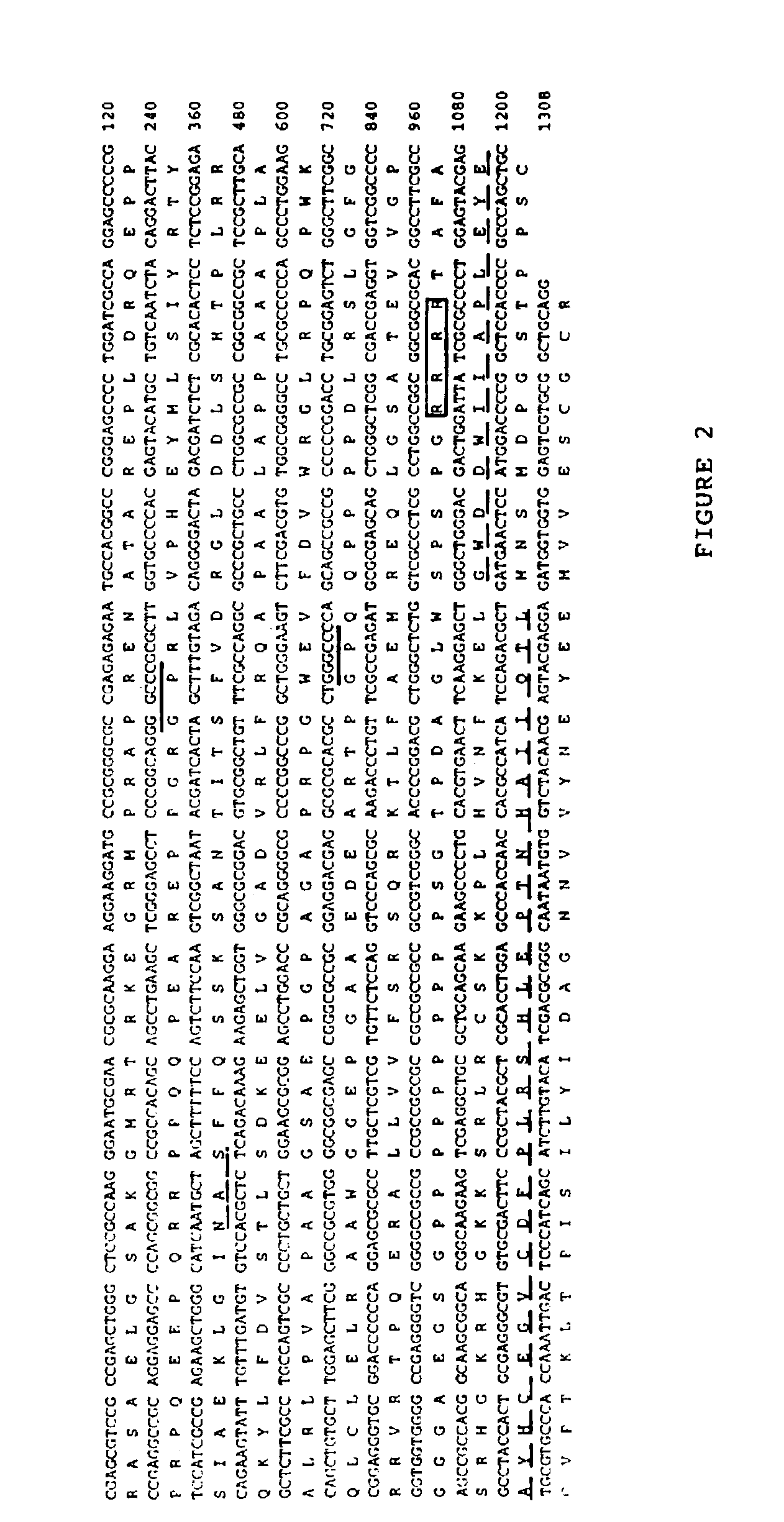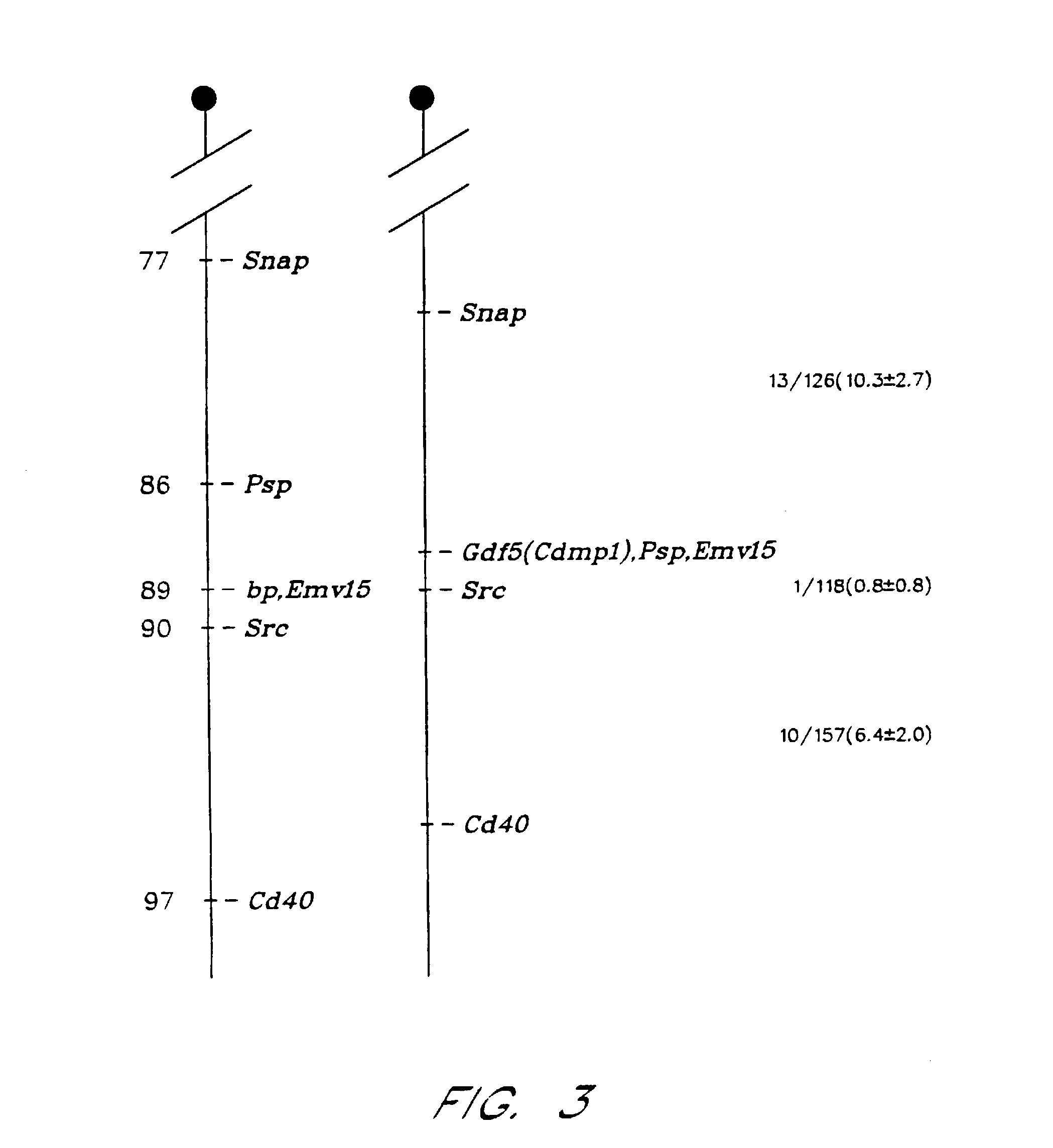Cartilage-derived morphogenetic proteins
a morphogenetic protein and cartilage technology, applied in the field of cartilage and bone development, can solve the problem of inability to distinguish the physiological roles of different bmp family members, and achieve the effect of stimulating local cartilage formation and convenient production
- Summary
- Abstract
- Description
- Claims
- Application Information
AI Technical Summary
Benefits of technology
Problems solved by technology
Method used
Image
Examples
example 1
Characterization of Cartilage Derived Chondrogenic Activity
[0028]Articular (metatarsophalangeal joints), scapular and nasal cartilage (300 grams wet weight per tissue) were prepared from newborn calves. Epiphyseal cartilage was dissected from fetal bovine femurs (7–8 months). The tissues were finely minced and homogenized with a Polytron (top speed, 2×30 seconds) in 20 volumes of 1.2 M GdnHCl, 0.5% CHAPS, 50 mM Tris-HCl pH 7.2, containing protease inhibitors and extracted overnight at 4° C. as described by Luyten et al., in J. Biol. Chem. 264:13377 (1989), which is hereby incorporated by reference. The disclosure of this article is hereby incorporated by reference. Sorgente et al., (Biochem Biophys. Acta. 282:441 (1972)) disclosed these procedures extract >90% of the lower molecular weight matrix while leaving most of the high molecular weight proteoglycans behind. The extracts were concentrated and exchanged with 6 M urea by diafiltration using an Ultrasette™ (Filtron Technology In...
example 2
PCR Amplification of cDNAs Encoding Cartilage-Derived Morphogenetic Proteins
[0034]Total RNA from bovine articular chondrocytes (metatarsophalangeal joints) was extracted using a modified acid guanidine-phenol-chloroform method described by Chomczynski et al., in Anal. Biochem. 162:156 (1987) and by Luyten et al., in Exp. Cell. Res. 210:224 (1994). Poly(A)+ RNA was isolated using magnetic beads (PolyATract™, Promega, Madison, Wis.). Four degenerate oligonucleotide primers corresponding to highly conversed motifs in the C-terminal region of the BMPs were used; S1: 5′-GGITGG(C / A)AIGA(C / T)TGGAT(A / C / T)(A / G)TIGC(A / C / G / T)CC-3′ (SEQ ID NO:1) corresponding to amino acids [GW(Q / N)DWI(I / V)AP] (SEQ ID NO:2); S2: 5′-GGITGG(A / T)(G / C)(I)GA(G / A)TGGAT(T / C / A)ATI(A / T)G(A / C / G / T)CC-3′ (SEQ ID NO:3) corresponding to amino acids [GWSEWIISP] (SEQ ID NO:4); AS1: 5′-A(A / G)(A / G)GT(C / T)TG(A / C / G / T)AC(A / G)AT(A / G)GC(A / G)TG(A / G)TT-3′ (SEQ ID NO:5) corresponding to amino acids [NHAIVQTL] (SEQ ID NO:6); AS2:5′-CAI(C...
example 3
Library Screening
[0038]A 120 bp PCR fragment encoding part of the C-terminal domain of novel BMP like genes (dashed line, FIG. 1) was used to screen two cDNA libraries. One library, from adolescent human articular cartilage poly(A)+ RNA (kindly provided by Dr. Bjöm Olsen, Harvard, Boston, Mass.), was primed with oligo dT and constructed in the λgt11 vector. The other was a bovine oligo dT and random primed articular cartilage cDNA library constructed in the UNIZAP®XR vector (Stratagene, La Jolla, Calif.). Approximately 1×106 plaques from each library were screened by standard procedures. Hybridizations were performed for 20 hours at 42° C. in 6×SSC, 1× Denhardt's solution, 0.01% tRNA, 0.05% sodium pyrophosphate and the membranes (DuPont 137 mm nylon membranes, New England Nuclear, Mass.) were washed to final stringency of 6×SSC, 0.1% SDS at 55° C. for 20 minutes.
[0039]Thus, cloned inserts having novel BMP-like sequences were isolated, radiolabeled and used to screen both human and b...
PUM
| Property | Measurement | Unit |
|---|---|---|
| molecular weights | aaaaa | aaaaa |
| molecular weights | aaaaa | aaaaa |
| molecular weights | aaaaa | aaaaa |
Abstract
Description
Claims
Application Information
 Login to View More
Login to View More - R&D
- Intellectual Property
- Life Sciences
- Materials
- Tech Scout
- Unparalleled Data Quality
- Higher Quality Content
- 60% Fewer Hallucinations
Browse by: Latest US Patents, China's latest patents, Technical Efficacy Thesaurus, Application Domain, Technology Topic, Popular Technical Reports.
© 2025 PatSnap. All rights reserved.Legal|Privacy policy|Modern Slavery Act Transparency Statement|Sitemap|About US| Contact US: help@patsnap.com



